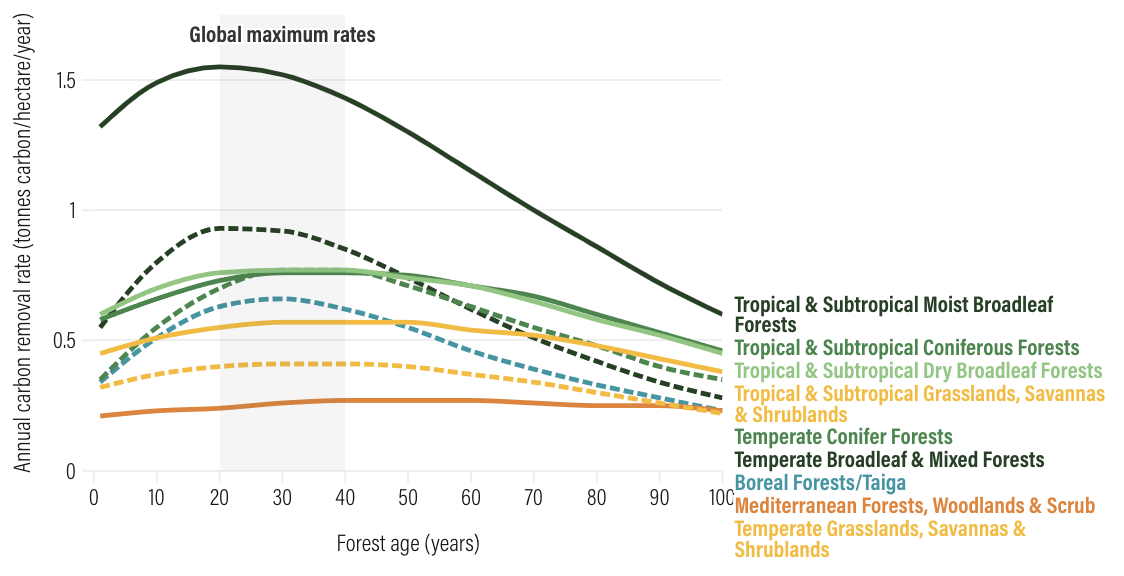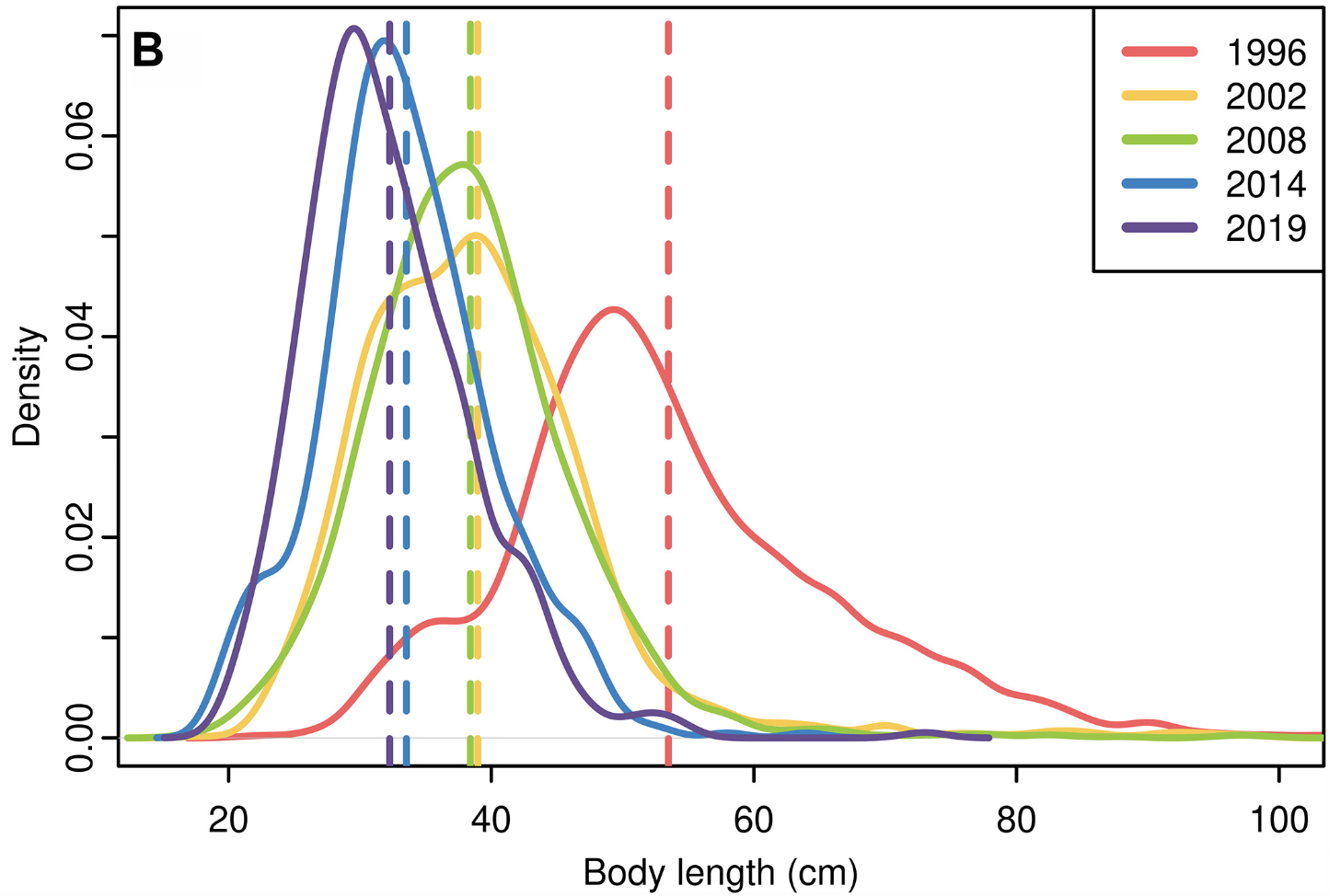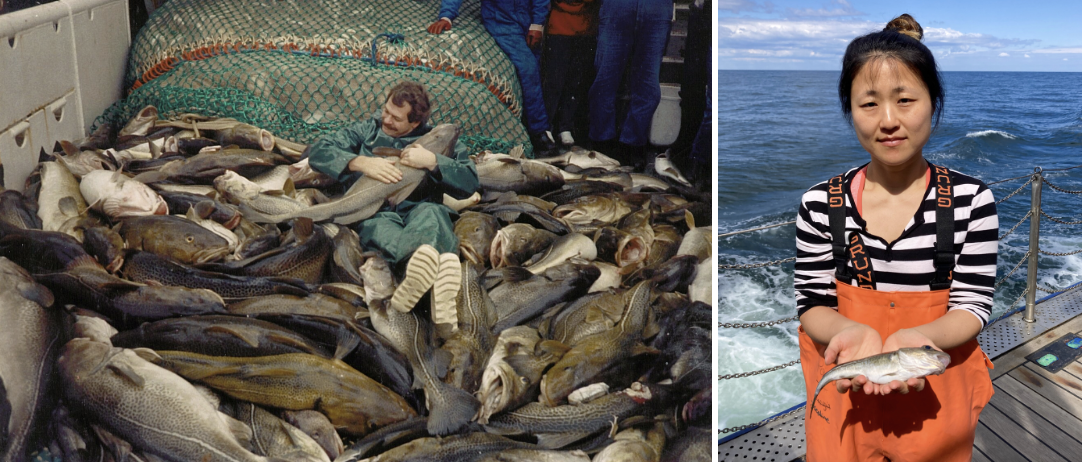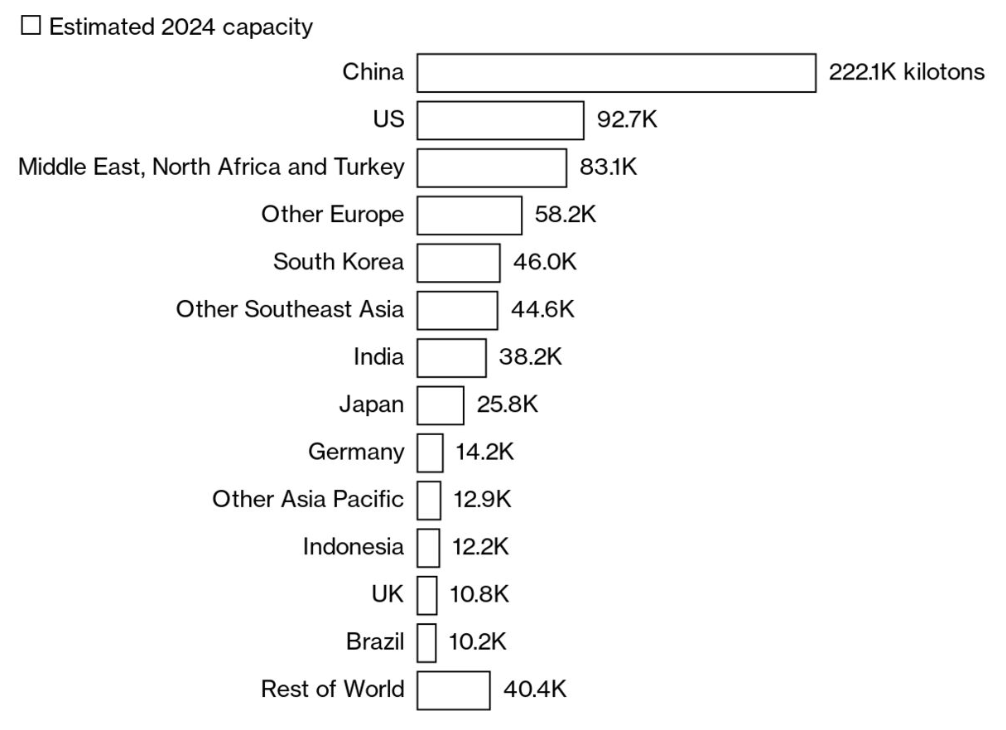Environment: Decisive action needed to avoid unmanageable climate tipping points
August 10, 2025
Global climate tipping points are getting closer, creating danger zones for the biosphere and human societies. Naturally regenerating forests must be left to grow for longer. The North Atlantic Ocean has swapped cod for nanoplastics.
Climate tipping points threaten global food and water supplies
Global Tipping Points is a community of more than 200 researchers from 26 countries that provides “the latest scientific updates on the proximity to global climate tipping points and the risks in the biosphere and societies”. The group, which includes many of the world’s most respected climate scientists, aims to build understanding of harmful climate tipping points and the power of positive social tipping points to achieve transformational change and “help navigate toward a thriving sustainable future”.
Following their recent conference, Global Tipping Points issued a statement that begins:
“Global warming is projected to exceed 1.5°C within a few years, placing humanity in the danger zone where multiple climate tipping points pose catastrophic risks to billions of people. Already tropical coral reefs have crossed their tipping point and are experiencing unprecedented dieback, impairing the livelihoods of hundreds of millions who depend on them. Current warming has activated these irreversible changes and every fraction of additional warming dramatically increases the risk of triggering further damaging tipping points.”
The statement goes on to identify other tipping points (for instance in the North Atlantic Ocean and the Amazon rainforest) that would dramatically change the natural environment and weather systems and threaten global food and water supplies. The authors stress that this impending crisis represents “a human rights and planetary health imperative and ultimately a matter of survival” that demands immediate, unprecedented action from policymakers worldwide.
The statement recommends:
- Decisive policy and civil society action to minimise the level and duration of the now inevitable overshoot of global warming beyond 1.5oC so that the peak remains well below 2o. The currently promised Nationally Determined Contributions to reducing greenhouse gas emissions will, if implemented, limit warming only to 2.1oC. However, global warming will approach 3oC based on countries’ current actual policies and actions;
- Halving global greenhouse gas emission levels by 2030 compared with 2010. (Emissions are currently 8% higher which means that an average 0.5%/year increase must be reversed right now into a 4%/year decrease. A bit of a science-politics mismatch here, I think!);
- Developing the currently embryonic technologies that remove CO2 from the atmosphere so that they can be rolled out at scale, economically and environmentally sustainably;
- Governments enact policies that trigger positive tipping points in their economies and societies. These need to generate self-propelling technological and behavioural changes that eliminate greenhouse gas emissions and stimulate nature regeneration in a just, orderly and equitable manner.
The statement’s blunt conclusion is that only decisive action “can tip the world’s trajectory from facing unmanageable climate tipping point risks to seizing positive tipping point opportunities”.
Missed potential of naturally regrowing forests to capture CO2
Although it’s not the panacea, there’s no doubt that trees have a big part to play in helping us halt global warming. Plus trees confer lots of other benefits. If we were to ask people how we can help trees help us, I suspect that two responses would roll off most people’s tongues: stop chopping them down and plant more of them.
But there’s a third approach that hasn’t received as much attention as it deserves: manage naturally regrowing, or secondary, forests to increase the carbon they remove from the air. Unlike the carbon in fossil fuels, the carbon in the roots, trunks and branches of living trees hasn’t been locked away for millions of years, but trees can take carbon out of circulation for decades which is exactly what we need at this critical moment to combat global warming.
Naturally regrowing forests (forests that are regenerating without help from humans after logging, fires or land clearing for failed agriculture, for instance) have great potential to complement halting deforestation and planting more trees in reducing the critically important concentration of CO2 in the atmosphere.
The annual rate at which a naturally regenerating forest removes carbon from the atmosphere varies with its location and the age and type of trees. The figure below shows that in naturally regenerating forests (1) at all ages, Tropical and Subtropical Moist Broadleaf Forests absorb more CO2 than all the others, (2) there’s a fairly small difference in carbon storage rates among the rest, and (3) with the exception of Mediterranean Forests, Woodlands and Scrub, annual carbon storage rates increase rapidly in the first two decades of a forest’s life, peak in the third and fourth decades and then tail off.

The problem, however, is that humans (through repeated land clearing and harvesting) and events such as fires and pests seldom give regrowing forests the chance to live 20-40 years. In the tropics, for example, naturally regenerating forests last for an average of only 7.5 years before being cut down and only 6% reach 20 years of regrowth.
To maximise the climate benefit of naturally regrowing forests:
- Young secondary forests should be prioritised for protection and kept growing for longer;
- Large-scale natural forest regeneration should start now;
- Countries should maximise the carbon capture benefits by identifying the locations and forest types best suited to local conditions; and
- The communities who live near to and/or rely on forests should be consulted and benefit from the longer regrowth period.
What happened to the British chippy’s cod fillet?
North Atlantic cod used to grow to more than a metre in length and weigh up to 40kg. A few people got very rich fishing for cod between the 17th and the mid-20th centuries. Wars have been fought over cod fishing. Many a fried cod fillet was wrapped in yesterday’s newspaper in the fish and chip shops of the Lancashire mill town where I grew up in the 1950s and ’60s.
Cod were so popular and lucrative and commercial fishing became so highly industrialised that several cod populations in the North Atlantic collapsed in the late 20th century. Around 1970, almost two million tonnes of Northwest Atlantic cod was caught, principally by Canada but also by a few European nations. By the mid-90s, it had become almost zero. By 1992, several Northern Atlantic cod populations had fallen to 1% of historic levels. Fishing bans were introduced but populations have recovered very little.
That’s a crude synopsis of the cod numbers; what about their size?
Not only have cod numbers declined as a result of overfishing combined with environmental changes, so has their size. The modal length of cod caught in 1996 was about 50cm; in 2019 it was about 30cm ( figure below).

The decreasing size of cod is more dramatically illustrated in the two photos below from the Baltic Sea. The photo on the left was taken in 1987 during a research expedition. The photo on the right shows that today a fully grown cod can be held in two hands and served on a dinner plate.

But why the shrinkage? Is it simply that all the big cod have been caught or have there been genetic changes? A recent study found that overexploitation of cod with, for commercial fisherfolk and consumers, particular physical characteristics has led to population-wide changes in the genes associated with body growth: “the ‘shrinking’ of cod has a genetic basis and human activities have left a measurable mark on their DNA.” Put simply, “When the largest individuals are consistently removed from the population over many years, smaller, faster-maturing fish gain an evolutionary advantage.”
Overfishing doesn’t just reduce the numbers, it can change the gene balance in the population that’s left.
Oceans contain more nanoplastics than macro- and microplastics
Plastic pollution is now found in every known natural habitat. The world generates about a million tons of plastic waste every day. Less than 10% is recycled. More than 50% goes into landfill. Around 5-10% ends up in the oceans, mainly from river outflows and from coastal and ship littering but also from the atmosphere. Although widespread, marine plastics accumulate along coastlines and in bays and subtropical ocean gyres (the Great Pacific Garbage Patch is almost as large as Queensland).
Wave action, UV light and microbes all degrade plastic so that microplastic items (over 5mm) fragment into microplastics (1mm-5mm) and nanoplastics (under 1mm). Unlike their larger siblings, nanoplastic particles are not dispersed by currents but rather by collision with water molecules and Brownian motion. The concentration of marine nanoplastics by geography and depth is virtually unknown and they are not included in estimates of the amount of plastic in the oceans.
Water sampling at 12 locations in the North Atlantic Ocean from west of the Canary Islands to the coast of the Netherlands has found nanoplastics throughout the entire water column, with the highest concentrations in the top 10 metres and the lowest concentrations at the bottom. The researchers estimate that in the surface layers of the temperate to subtropical North Atlantic there are around 27 million tonnes (Mt) of nanoplastics, which is about the same as previous estimates of the combined mass of macro- and microplastics in the entire Atlantic Ocean and possibly all the oceans.
The authors conclude that the total mass of plastic in the world’s oceans is higher than previously thought and that nanoplastics are the largest and, because of their ability to cross biological barriers, bioaccumulate and interact chemically at rapid rates, the most problematic fraction for marine life.
Nations are currently trying to bash out, at their sixth attempt, a global plastics treaty in Geneva. The major sticking point is that most nations want a comprehensive treaty that covers reduced production of plastics and more and better recycling, while the major plastic-producing companies and nations want the treaty to cover only recycling. The bar chart below from Bloomberg Green Daily on 5 August 2025 shows the current production capacity of the top plastic producing countries (a kiloton is 1,000 tons). Seven countries produce 85% of the world’s plastic.

Farmers oppose wind and solar farms
The protesters and placards below greeted delegates outside the National Renewables in Agriculture Conference in Bendigo in July. I guess that these are the people who, as is their right, vote for the likes of Matt Canavan and Barnaby Joyce.


The views expressed in this article may or may not reflect those of Pearls and Irritations.

